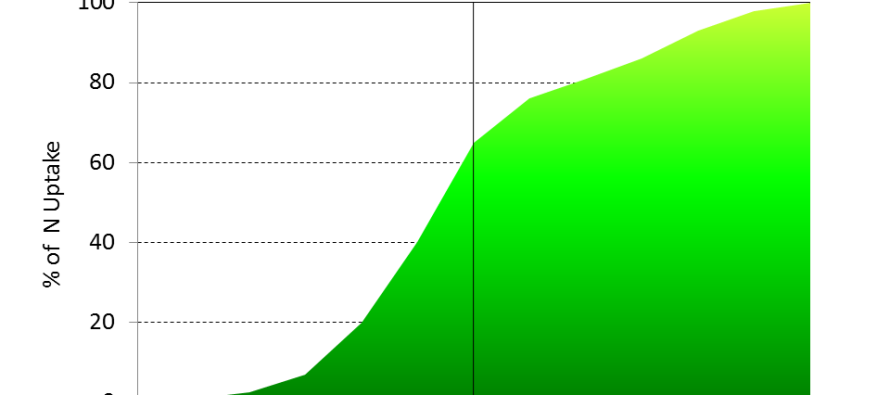How to get the Best Return on your Corn Nitrogen Dollars

Related Articles
- 2010 Soybean And Corn Variety Trial Data 3
- Fertilizing Cotton with Poultry Litter 5
- Spring Nitrogen Fertility Suggestions for Wheat 0
Latest Tweets
Mississippi’s warm, wet climate can pose considerable issues with nitrogen fertilization, particularly for crops like corn which are very responsive and demand high amounts for optimal productivity. The South’s warm, high rainfall climate greatly increases potential nitrogen loss during the season through ammonia volatilization, denitrification and leaching, compared to drier and colder climates. Of course, the corn growing season is very long, encompassing considerable time during the spring and early summer when rainfall is normally plentiful, leading to extended soil saturation and significant nitrogen loss. Likewise, irrigation may also compound issues associated with nitrogen management. Therefore, optimizing your nitrogen fertilizer dollars can involve considerably more planning and management than simply applying a given fertilizer rate.
 Your primary goal for improving corn response to nitrogen fertilizer should be to minimize nitrogen exposure to wet conditions while still meeting crop demand. During early corn vegetative stages, plant nitrogen needs are very low, while rainfall is normally high. Therefore, applying only a small portion of total nitrogen near or shortly following emergence can greatly reduce your nitrogen exposure to conditions promoting loss. Subsequent “split” or “topdress” applications should contain the bulk of the crop seasonal nitrogen needs. The corresponding graph represents corn seasonal nitrogen uptake relative to key growth stage and serves as a basis for optimal application timing.
Your primary goal for improving corn response to nitrogen fertilizer should be to minimize nitrogen exposure to wet conditions while still meeting crop demand. During early corn vegetative stages, plant nitrogen needs are very low, while rainfall is normally high. Therefore, applying only a small portion of total nitrogen near or shortly following emergence can greatly reduce your nitrogen exposure to conditions promoting loss. Subsequent “split” or “topdress” applications should contain the bulk of the crop seasonal nitrogen needs. The corresponding graph represents corn seasonal nitrogen uptake relative to key growth stage and serves as a basis for optimal application timing.
For example, although corn doesn’t require much nitrogen during seedling stages, you need to apply at least 30 to 60 lbs/a of nitrogen (10 – 20% of seasonal total) by the time it gets 4 to 6 inches tall or slightly taller if you applied a starter fertilizer. Corn begins rapid growth and nitrogen uptake at the V6 growth stage. This is the key stage for your primary ground-applied nitrogen operation or side-dress. A practical goal for side-dressing or injecting liquid nitrogen is when corn reaches V4 – V6 growth stage (8 to 18 inches tall). A pre-tassel application can also be incorporated as simply another split in this system to further improve nitrogen efficiency.
Top-dressing urea is also becoming more popular and may substitute for side-dress application. However, top-dressing urea requires rainfall, irrigation or tillage to incorporate nitrogen and prevent volatility loss. We strongly recommend using a urease inhibitor containing the active ingredient NBPT, such as Agrotain and other products, to limit volatility of top-dressed urea. Of course, timing urea application prior to forecast rain is suggested to help aid incorporation and reduce potential volatility. Conversely, avoid application to saturated or wet soils as well. In order to minimize leaf burn associated with top-dress application, we generally suggest applying no more than 150 lbs/a of urea per application on corn more than three feet tall. Thus, multiple applications (likely 4 to 5) are required to meet total seasonal N demand. Three of the total top-dress applications from V6 to tassel will help improve nitrogen efficiency.




Let me tell You a sad story ! There are no comments yet, but You can be first one to comment this article.
Write a comment